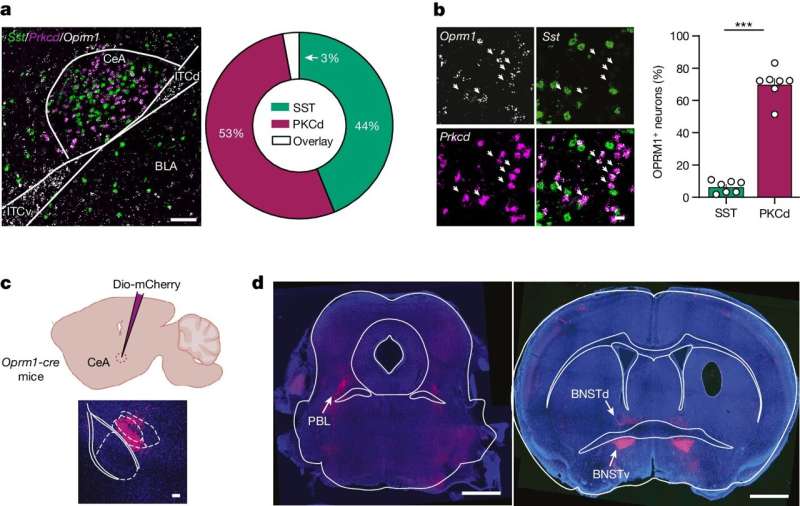May 23, 2024 report
This article has been reviewed according to Science X's editorial process and policies. Editors have highlighted the following attributes while ensuring the content's credibility:
fact-checked
peer-reviewed publication
trusted source
proofread
Study shows two neural pathways involved in fentanyl addiction

A team of neuroscientists at the University of Geneva, working with a colleague from the University of Strasbourg, Institute for Advanced Study, and another from Université de Montpellier CNRS, reports that there are two neural pathways involved when people become addicted to fentanyl.
In their study published in the journal Nature, the group tested the brains of mice administered fentanyl and again as they underwent withdrawal from the drug.
Prior research has shown that the opioid fentanyl is highly addictive and that the pleasurable feeling users get is due to dopamine being released in the midbrain. Less is known about the factors involved in the withdrawal that users experience upon cessation.
In this new study, the research team conducted lab experiments with test mice to learn more about the factors involved in making fentanyl so addictive.
The researchers administered regular injections of fentanyl to test mice for three days and studied their brains to find out what the drug was doing. As previously reported, the researchers found that neurons in the ventral tegmental area were aroused by the increase in dopamine.
Taking a closer look, they found that the presence of fentanyl inhibited tamping activity involved with neurons that release dopamine, leading to an increase in dopamine production, producing strong feelings of pleasure.
After the three days were up, the researchers halted the fentanyl and also gave the mice naloxone, which induced immediate withdrawal symptoms. Testing of their brains showed an increase in neural activity in parts of the amygdala known to be involved in processing negative memories and scary experiences. Under a microscope, the neurons were found to have receptors capable of responding directly to fentanyl.
The research team also found that removing receptors in the ventral tegmental area stopped the pleasurable effects of fentanyl but not the withdrawal symptoms—knocking out the receptors in the amygdala did the trick. They also found that if they engineered the same neurons to respond to light, the mice would learn to reduce their withdrawal symptoms by turning on the light.
The researchers conclude that the reason fentanyl is so addictive is due to the amount of dopamine that is released into the brain and because of the highly unpleasant withdrawal symptoms that arise when its use is stopped.
More information: Fabrice Chaudun et al, Distinct µ-opioid ensembles trigger positive and negative fentanyl reinforcement, Nature (2024). DOI: 10.1038/s41586-024-07440-x
© 2024 Science X Network


















